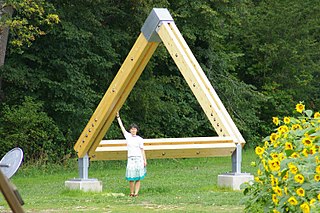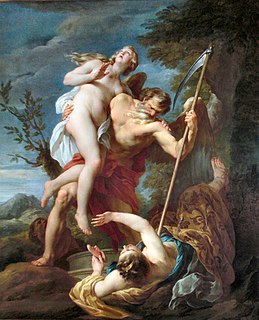In logic, the semantic principle of bivalence states that every declarative sentence expressing a proposition has exactly one truth value, either true or false. A logic satisfying this principle is called a two-valued logic or bivalent logic.
In philosophy, vagueness refers to an important problem in semantics, metaphysics and philosophical logic. Definitions of this problem vary. A predicate is sometimes said to be vague if the bound of its extension is indeterminate, or appears to be so. The predicate "is tall" is vague because there seems to be no particular height at which someone becomes tall. Alternately, a predicate is sometimes said to be vague if there are borderline cases of its application, such that in these cases competent speakers of the language may faultlessly disagree over whether the predicate applies. The disagreement over whether a hotdog is a sandwich suggests that “sandwich” is vague.

In classical logic, a contradiction consists of a logical incompatibility between two or more propositions. It occurs when the propositions, taken together, yield two conclusions which form the logical, usually opposite inversions of each other. Illustrating a general tendency in applied logic, Aristotle's law of noncontradiction states that "One cannot say of something that it is and that it is not in the same respect and at the same time."
Moore's paradox concerns the apparent absurdity involved in asserting a first-person present-tense sentence such as, "It's raining, but I don't believe that it is raining" or "It's raining but I believe that it is not raining." The first author to note this apparent absurdity was G. E. Moore. These 'Moorean' sentences, as they have become known, are paradoxical in that while they appear absurd, they nevertheless:
- Can be true,
- Are (logically) consistent, and moreover
- Are not (obviously) contradictions.

The sorites paradox is a paradox that arises from vague predicates. A typical formulation involves a heap of sand, from which grains are individually removed. Under the assumption that removing a single grain does not turn a heap into a non-heap, the paradox is to consider what happens when the process is repeated enough times: is a single remaining grain still a heap? If not, when did it change from a heap to a non-heap?
A paraconsistent logic is a logical system that attempts to deal with contradictions in a discriminating way. Alternatively, paraconsistent logic is the subfield of logic that is concerned with studying and developing paraconsistent systems of logic.
Truthmaker theory is "the branch of metaphysics that explores the relationships between what is true and what exists."
Dialetheism is the view that there are statements which are both true and false. More precisely, it is the belief that there can be a true statement whose negation is also true. Such statements are called "true contradictions", dialetheia, or nondualisms.
A semantic theory of truth is a theory of truth in the philosophy of language which holds that truth is a property of sentences.
In the Middle Ages, variations on the liar paradox were studied under the name of insolubilia ("insolubles").
Fitch's paradox of knowability is one of the fundamental puzzles of epistemic logic. It provides a challenge to the knowability thesis, which states that every truth is, in principle, knowable. The paradox is that this assumption implies the omniscience principle, which asserts that every truth is known. Essentially, Fitch's paradox asserts that the existence of an unknown truth is unknowable. So if all truths were knowable, it would follow that all truths are in fact known.
The paradoxes of material implication are a group of formulae that are truths of classical logic but are intuitively problematic.
Sophismata in medieval philosophy are difficult or puzzling sentences presenting difficulties of logical analysis that must be solved. Sophismata-literature grew in importance during the thirteenth and fourteenth centuries, and many important developments in philosophy occurred as a result of investigation into their logical and semantic properties.
Following the developments in formal logic with symbolic logic in the late nineteenth century and mathematical logic in the twentieth, topics traditionally treated by logic not being part of formal logic have tended to be termed either philosophy of logic or philosophical logic if no longer simply logic.

The Pinocchio paradox arises when Pinocchio says "My nose grows now" and is a version of the liar paradox. The liar paradox is defined in philosophy and logic as the statement "This sentence is false." Any attempts to assign a classical binary truth value to this statement lead to a contradiction, or paradox. This occurs because if the statement "This sentence is false" is true, then it is false; this would mean that it is technically true, but also that it is false, and so on without end. Although the Pinocchio paradox belongs to the liar paradox tradition, it is a special case because it has no semantic predicates, as for example "My sentence is false" does.
The following is a list of works by philosopher Graham Priest.
The knower paradox is a paradox belonging to the family of the paradoxes of self-reference. Informally, it consists in considering a sentence saying of itself that it is not known, and apparently deriving the contradiction that such sentence is both not known and known.








